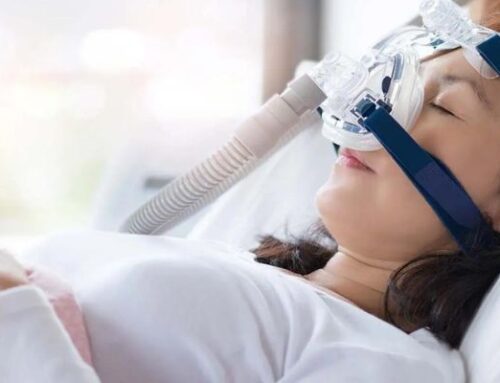Many people know that sleep affects our health. Aside from being a way to recover from the hustle and bustle of everyday life, sleep gives the body a chance to recover and restore the energy used during the day. For most, sleep brings rest, but for sleep disorder sufferers, sleep can be frustrating. This is called apnea and chiropractic care can help with it.
Understanding Sleep Apnea
Sleep apnea is a disorder in which breathing stops periodically during sleep. The three major types are obstructive sleep apnea, central sleep apnea, and mixed or complex sleep apnea. Although the types differ in cause and symptoms, they all are characterized by pauses, and shallow, or infrequent breathing during sleep.
The most common form of sleep apnea is obstructive sleep apnea, accounting for about 90 % of all cases. It comes directly from a physical blockage, usually the collapse of throat tissues. In contrast, central sleep apnea results from a problem between the brain and breath muscles.
Mixed sleep apnea is not a separate disorder, but rather is a mix of the characteristics of both obstructive and central types. Finding out the exact kind is very important to the correct diagnosis and treatment of this potentially dangerous ailment.
How Chiropractic Care Can Aid in Sleep Apnea Treatment

Further study is necessary to ascertain the effectiveness of chiropractic treatment of sleep apnea. Yet, many people report a reduction of symptoms, better sleep, and improved quality of life through chiropractic care.
Chiropractic care works by adjusting the body, loosening the joints, and strengthening the muscles that support the spine. Various chiropractic treatments are commonly employed to address sleep apnea. When used, here are ways it helps in enhancing sleep quality:
1. Alignment and airway function
Chiropractic care is concerned with the correct alignment of the spine. Subluxations are terms used to describe misalignments. They can affect nerves overseeing the muscles which are used to maintain open airway passages while one is sleeping.
Chiropractors try to bring these misalignments back into proper position to regulate nerve function, which in turn strengthens the airway. Thus, the emphasis on spinal alignment highlights the underlying purpose of being as concerned with enhancing overall well-being as possible by correcting problems at the root.
This approach goes beyond just relieving symptoms to explore the relationship between spinal adjustments and the nervous system’s control. Chiropractic interventions intend to bring about overall enhancements in fostering ideal nerve function, and as such in helping lungs stay intact during sleep.
2. Enhanced muscle tone
The role of the muscles that support the neck and throat in sleep apnea is key, and effective management of the disease includes eliminating any problems with these muscles. These muscles are vital to avoid airway collapse, a frequently occurring problem in sleep apnea.
Adjustments from chiropractic and targeted exercises are part of a strategic plan to strengthen the muscles, and thereby lower the chance of airway obstruction during sleep. Chiropractic treatments are aimed at the muscular aspects responsible.
Chiropractic care seeks to enhance a stronger and more stable airway structure. This integrative method stresses the role of muscular support in overcoming sleep apnea-associated difficulties. In other words, as these muscles are strengthened, so too is the management of this sleep disorder.
3. Improved posture and breathing

Chiropractic care often emphasizes treatments related to posture, understanding that bad posture can affect breathing, especially while sleeping. Chiropractors help to correct posture and improve the mechanics of breathing. This reduces stress on the respiratory system and lessens sleep apnea symptoms.
By making carefully selected adjustments and therapeutic interventions, this care may also improve overall respiratory capability, leading to more sound sleep. Chiropractic care, based on a holistic approach, shows that posture and respiratory health are intimately connected.
In this way, by helping to resolve issues of poor posture correction, chiropractors hope to elevate not only physical and musculoskeletal health, but even respiratory effectiveness. In essence, chiropractic care works from head to toe for a comprehensive understanding of overall health and quality of sleep.
4. Neurological impact
Chiropractic adjustments could provide neurological advantages in that the central nervous system regulates a host of body activities, not the least of which is breathing. Yet, while the specific ways remain incompletely understood, proponents suggest that chiropractic care, which strengthens neurological function, could have a beneficial influence on sleep apnea.
This possible connection between chiropractic adjustments and successful sleep apnea sufferers has emphasized the complex relationship between spinal health and neurological health.
Thus, chiropractic interventions are aimed at stimulating the best possible communication of the central nervous system, which could lead to better control of respiration during sleep. This could very well reduce the severity of sleep apnea episodes.
5. Complementary therapies
In most cases, chiropractic is combined with the holistic approach, which incorporates many forms of lifestyle adjustment and therapy. This includes instructions regarding physical exercise, diet-based advice, and various aspects of mental and physical well-being.
Each of them contributes their part to better sleep and health. By using this holistic strategy, chiropractic care indirectly addresses factors for sleep apnea. Chiropractors also guide exercise schedules, nutrition plans, and general health management to promote not only spinal health but also to participate in the overall well-being of their patients.
Combining this integrated practice, chiropractic care acknowledges that lifestyle components are all interrelated and are responsible for sleep quality. If patients follow this kind of multidisciplinary approach, their specific muscle and skeleton problems are handled and they eliminate factors that increase the likelihood of sleep problems such as sleep apnea.
Conclusion
There is evidence that chiropractic care can help relieve sleep apnea, but little is known about how it works, and whether everyone benefits to the same degree. If you have sleep apnea symptoms, consult your healthcare provider to find suitable treatments. Chiropractic care may be an alternative option for improving sleep quality to help fight this condition.












